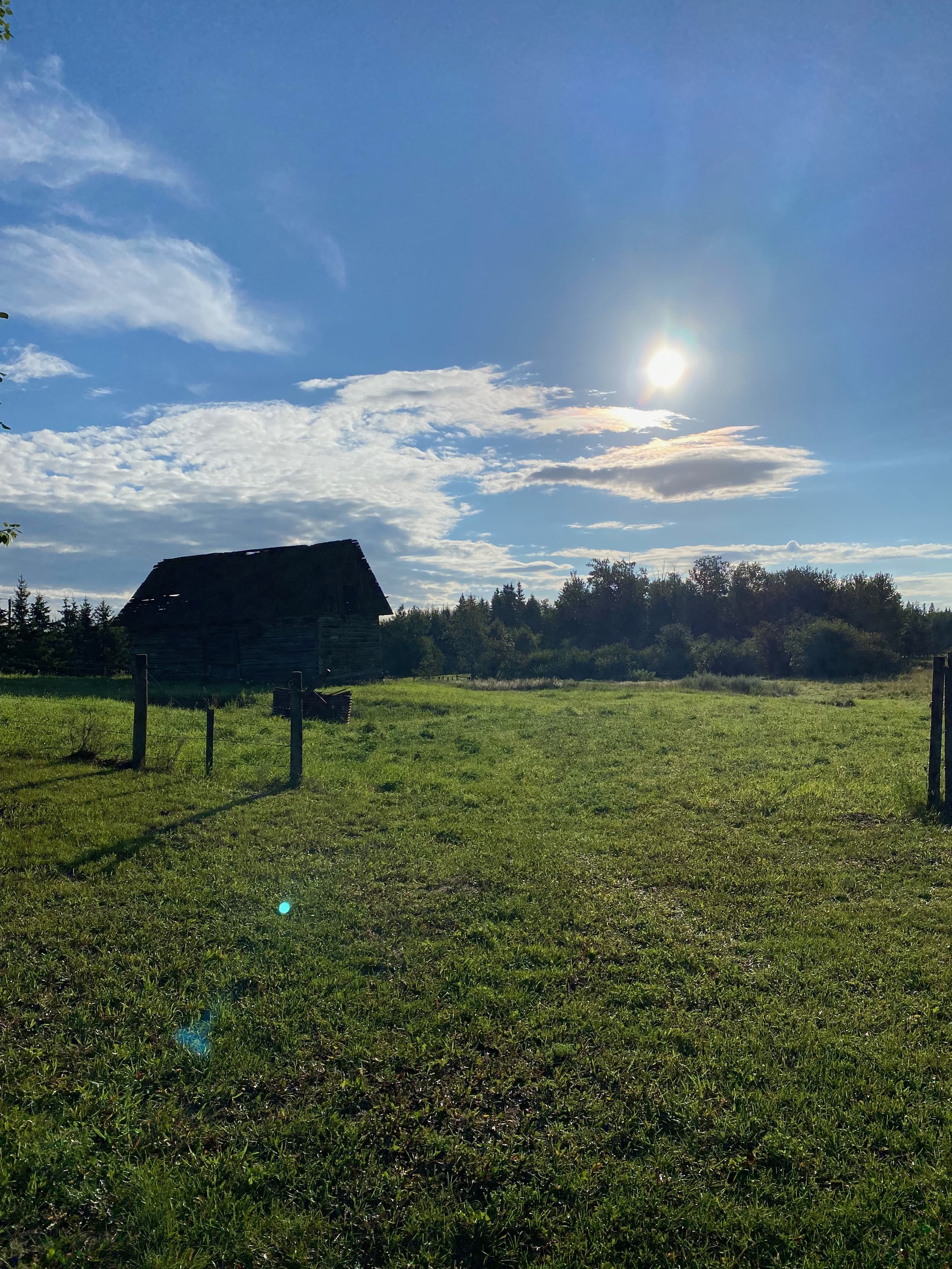The History of Homesteads
To encourage people to settle on the prairies of Saskatchewan, “the Dominion Government offered a grant for a free homestead of 160 acres (also known as a quarter-section) for a $10 registration fee to those individuals and families who were prepared to live on and cultivate the land during a qualifying period of time.”
The homesteader had to build a log or a sod house, and cultivate a specified area within 3 years. Homesteading was difficult, with the lack of roads and bridges, trails would be impassable when it rained, the absence of doctors meant injuries could be permanent or result in death, and if the water was not drinkable homesteaders had to melt snow or collect rainwater. On top of all the hard work that had to be done to homestead, it was lonely, “Homesteaders and their families were often separated from friends and relatives, and many suffered years of hardship and loneliness.”
Adversities connected the homesteaders and slowly communities started to grow. Recreational activities would be held, and entertainment would go on at community halls.
How Regina Was Settled
Indigenous people have lived on Treaty 4 for thousands of years and Treaty 4 is also considered the traditional territory of the Métis. This land was important to the Indigenous people because it is where they would hunt roaming herds of bison. Regina used to be called Pile of Bones because the Indigenous people began to stack the bison bones to honour the bison's spirit because they were becoming depleted due to overhunting by non-Indigenous hunters. Indigenous people named the area “oskana kâ-asastêki,”or “the place where the bones are piled”. “European settlers translated this to Pile of Bones.
European settlement began in the 1880s as an agricultural community and served as a distribution point for farm materials and produce. “Regina's lack of reliable water, shelter or trees made it a poor spot for a permanent settlement.” Theory is that Lieutenant Governor Edgar Dewdney chose Regina as the capital because it was close in proximity to Dewdney’s own land purchase. The settlement was later renamed to “Regina” which is latin for “Queen”, after the reigning monarch at the time, Queen Victoria. Regina became a city in 1903, and Saskatchewan a province in 1905.
Types of Homesteads
Sod House “Soddy”
Building a sod house was the easiest and cheapest way for settlers on the prairies to make a home and a barn. Sod is a layer of grass soil and roots that was cut into strips then piled on top of each other to make walls. Logs or lumber were used for the door, door frame, and window frames. Glass was not always available so greased paper or canvas would cover the windows. Logs were used for the roof then covered with sod and hay. Sometimes boards were used for the floor but more often than not it was packed earth. The sod houses however, were warm in the winter and cool in the summer. Sod houses would leak though, so roof maintenance was yet another homesteader chore.
Log House
Log houses were built by pioneers settling in areas with dense trees. After the land was cleared the logs were taken to the homestead where they were cut and put into place. Once the structure was built the logs were coated in mud and then whitewashed with lye and water (the lye being made from wood ashes).
How Settlements Become Cities
In the beginning settlements were developed incrementally by normal everyday people. And what created growth and value was proximity. Pop-up shacks were positioned next to each other because before the time of cars, businesses wanted to be right next to each other to ensure business. Home-owners who were not farmers wanted to be near these towns. As more business owners set up near other businesses the value of the land goes up.
Example Timeline
When the land is first settled it isn’t worth much, there’s probably a railroad stop and some platted lots of land. The land is bought cheap, and cheap houses are built on the land. As more cheap buildings are erected, the value of the land starts to increase, and so does demand. Cheap structures start to fall into disrepair, and at some point the land value becomes substantial enough, and improvement costs are cheap enough to justify tearing down the shack to put up a more substantial one. The combination of incrementally rising land values, combined with the ability to redevelop something more sturdy, naturally prompts the redevelopment of property in decline. Take away one of those factors and redevelopment breaks down. Without redevelopment there is only stagnation and then eventually decline.
Sources:
https://www.strongtowns.org/journal/2017/6/12/the-power-of-growing-incrementally
https://en.wikipedia.org/wiki/Log_cabin#/media/File:Log_cabin_homestead_-_DPLA_-_b123f5a1563fa8d3dd9ff0460e6da92d.jpg



